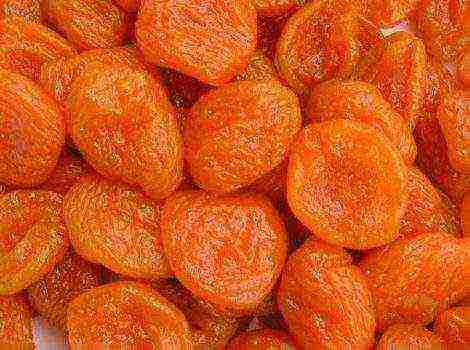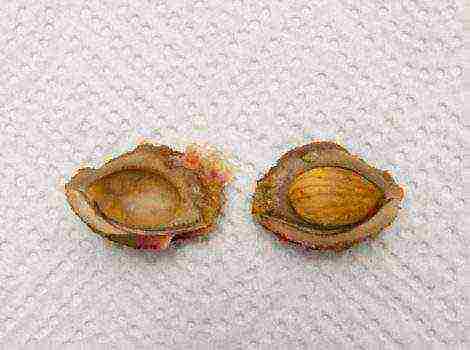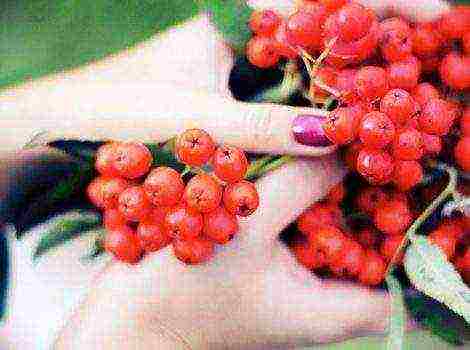Content [show]
Description and rules for planting pears Forest beauty
The forest beauty is an autumn pear variety. This type of pear is very popular among Russian gardeners due to its high yield. The birthplace of pears of the Forest Beauty variety is Belgium. On the basis of this variety, more than six dozen varieties of pear varieties have been created. They were created for a specific region and, in terms of their characteristics, significantly exceed the original variety.
Description and characteristics of the pear variety Forest beauty
Let's start, as always, with a description of the tree and fruits. Trees of the Forest Beauty variety are of medium or high dimensions. The plant grows vigorously for the first ten years, then growth slows down. Crohn's is a wide pyramidal shape. The branches hang down slightly. Under heavy load, they can sink almost to the ground. This makes harvesting easier, but there is a risk of breaking branches... To avoid this, the branches must be tied up.
The plant is characterized by medium foliage. The flowers are small, pinkish, resistant to temperature extremes. This is a frost-resistant culture.
Pear fruits of the Lesnaya Krasavitsa variety have a slightly elongated ovoid shape of medium size, weighing from 150 to 300 grams. Their skin is thin, while quite dense. It is slightly rough to the touch. The ripe fruit has a golden yellow color, in places that were located in the sun, a pink blush is observed. The pulp of the pear is tender, juicy, yellowish-white in color, sweet and sour in taste.
If they are not picked in time, pears can quickly overripe and rot. In this connection, it is advisable to start harvesting in advance, after 9 or 10 days before the fruit ripens. This period falls on the end of August, approximately 20-30 days. After being removed from the tree, pears are stored intact for no more than three weeks.
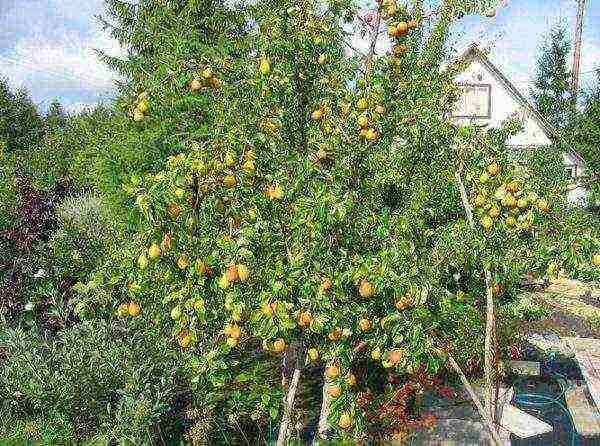
Advantages and disadvantages of the variety
Pear variety Forest Beauty is unpretentious. Which is one of its main advantages. Trees can grow in dry or wet soil. But the pear of this species shows its best characteristics when it grows in nutritious and loose soils.
The advantages of this variety include:
- longevity of trees;
- frost resistance;
- heat and drought resistance;
- high productivity;
- juiciness of fruits.
In addition to the advantages, this variety has some disadvantages. One of the main disadvantages is the plant's poor resistance to certain diseases, in particular - scab of fruits and leaves. The fact that the fruits on the tree overripe very quickly is also somewhat inconvenient. Fresh fruit harvest is stored for a short time.
Planting pears
For the variety Russian Beauty, loose chernozem soil is preferable. It is worth noting that this plant also feels good on other soils, except for clay soils.
It is very important to take care of the lighting, it should be sufficient.
It is recommended to plant seedlings in early April, while the leaves have not yet appeared. In central Russia, seedlings are planted in the fall, October is considered the most suitable month, since at this time the land contains a sufficient amount of moisture.This fact will have a good effect on the development of the root system.
The procedure for planting pear trees includes the following steps:
- dig a hole, one meter deep and 70 cm wide;
- mix the soil from the pit with fertilizers: 2 buckets of sand with compost, 3 tablespoons of potassium sulfate;
- place the mixture in a pit and form a mound;
- will prepare a solution of 10 liters of water and two glasses of slaked lime, pour into the planting hole;
- water;
- planting of seedlings is carried out in 10 days;
- before planting, place the seedlings in water for 2 hours;
- lower the tree into the hole, distribute its roots over the mound;
- cover with earth in such a way that the root collar is above the ground at a distance of 5 cm;
- compact the soil;
- mulch the soil using peat and humus.
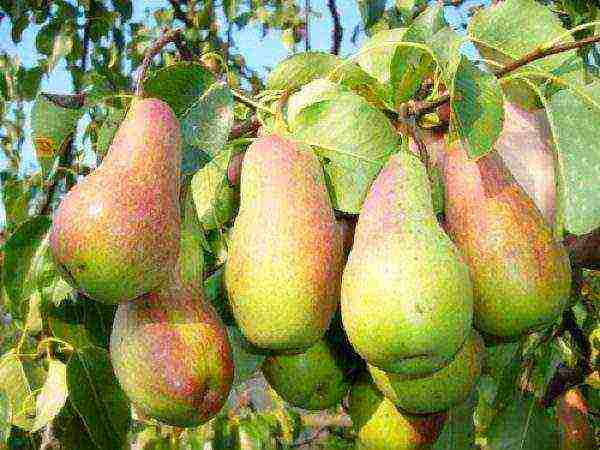
Plant care
Watering
The forest beauty is a heat-resistant variety. But this does not mean that the trees do not need to be watered. The most suitable irrigation method is the overhead irrigation method. If it is not possible to organize such a procedure, watering is carried out as follows:
- form a groove around the tree at a distance of 20 - 30 cm from the trunk;
- pour water into the groove (50 liters per tree).
Pruning
In order to keep the pear from being damaged by diseases and pests, it is necessary to prune. In addition, it will contribute to higher yields. Pruning is carried out in early spring and autumn.
Pruning is carried out several times:
- In the first year after planting seedlings. Pruning is done at a distance of half a meter from the ground.
- In the second year after planting, only the four strongest branches are left. Thus, the skeleton of a tree is formed.
- In subsequent years, the skeletal branches are cut by one quarter.
In addition, all dry, overly long, broken, defective branches are removed.
Preparing for winter
In order for the plant to be ready for winter, it is necessary to carry out some activities. First of all, the trunk area is mulched. This procedure is performed using sawdust, humus, peat.
Young trees should be prepared more carefully; the trunk will need to be insulated. For this, straw, leaves, paper are useful.

On the eve of frost, you can whiten the trunk, and young trees can be completely covered with a solution. To prepare a solution for 10 liters of water, take 2 kg of lime and one and a half kilograms of clay.
Top dressing
For the first time, the plant will have enough of the top dressing that was laid in the hole during planting. After three years, additional feeding will be required.
Mineral fertilizers are applied every year, and organic fertilizers are applied much less often - once every three years in the autumn. It will take from 5 to 7 kg of humus under one tree.
Feeding procedure:
- During the flowering period - carbamide.
- After flowering - nitroammofoska solution.
- At the end of June, the plant will need fertilizers, which include potassium and phosphorus.
- In the autumn period, 150 grams of wood ash is applied to a depth of 10 cm per 1 square meter.
Harvesting
The fruits of the Forest Beauty variety cannot be kept fresh for a long time. Therefore, the harvest is carried out before the pears are fully ripe.
Finally, pears ripen by the end of August. They will have to be removed earlier than this date. For storage, you can use a wire rack. Its sides will need to be covered with paper.The fruits are placed in containers with the stalks up. One row should not be in contact with another; for this, each row is laid with paper. The container with the harvest is placed in a cool room, the air humidity should be no higher than 90%.
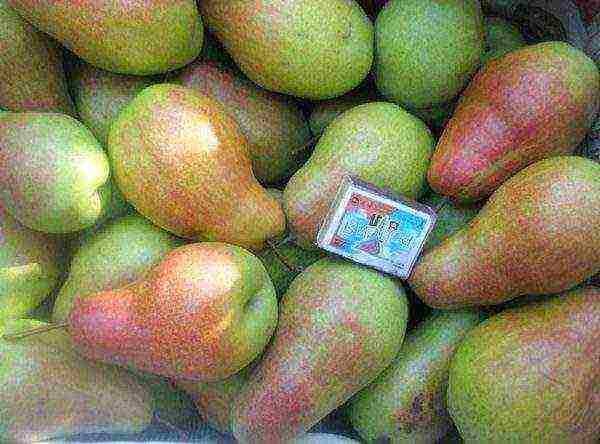
Pears of this variety are used to make preparations for the winter: jams, preserves, compotes.
Diseases and pests
The forest beauty has gained popularity among gardeners due to its disease resistance. Pests almost never start on it.
Scab often starts on the leaves of the Forest Beauty - a special kind of fungus. For a long time, the fungus does not manifest itself in any way, and when the leaves begin to cover with black spots, the disease will already develop so much that it will begin to destroy the organic fibers of the foliage. In a matter of time, the entire crown of the pear tree will be covered with scab.
Young plants are most susceptible to scab, while adults can resist this ailment.
It is difficult to treat the affected plant, so it is advisable to take preventive measures.
Scab prevention measures:
- Each year, prune the crown to allow sunlight to penetrate the foliage.
- In the fall, fallen leaves are collected and buried.
- Trim affected shoots.
- Spray the plant with Bordeaux liquid.
It is important to carry out prevention against other diseases and insects. In order to protect the plant from fruit rot, a chorus or speed is useful. Treatment with these drugs is carried out during the budding period or at the end of flowering. During the summer, prophylaxis against leaf rollers is carried out.... Treatment is carried out with Akrat, Match preparations. Treatment with chlorophos helps from the pear moth.
Timely processing will protect the plant from diseases and harmful insects and ensure good yields.
The Forest Beauty pear variety is very popular among gardeners. Pear trees of this variety are frost-resistant, and unpretentious in care, and the fruits have a unique juicy taste and aroma.
